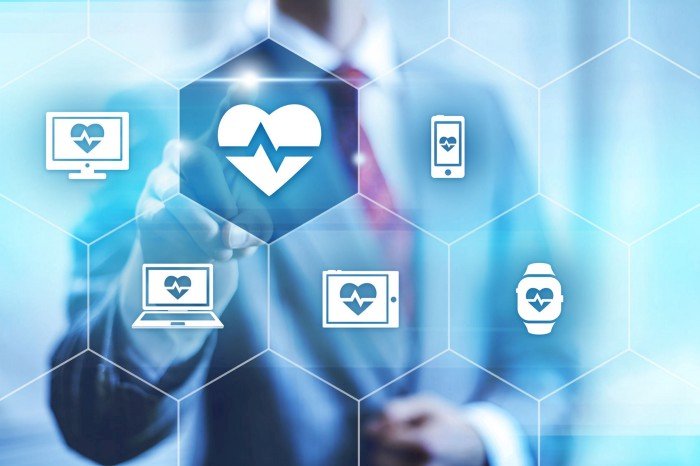Blockchain in Life science
Blockchain is not just restricted to financial service, it is enhancing its ability to work with many industries use cases. With this article we shall go addressing the questions that life sciences industries having to apply this technology for their use case.
Potential transformative, rapidly emerging blockchain technology has taken industries main attention and all industries studying and rush to apply this technology for their different use cases. Blockchain is not just restricted to financial service, it is enhancing its ability to work with many industries use cases. With this article we shall go addressing the questions that life sciences industries having to apply this technology for their use case.
Blockchain technology is admissible to life sciences:
Blockchain technology is potentially as transformative as internet was, for all industries. According to the report blockchain is being a nascent technology its thrive is by 2020 70 percent of all life sciences will be used on blockchain platform as of expectations from an industry executives survey.
Many life sciences companies have published their whitepapers detailing their idea on the applicability of blockchain to life sciences. The below are some aristocratic acumen from these papers that point to the enormous potential for blockchain use in this life sciences industry.
Key Advantages of Blockchain Technology
Few of the many advantages of blockchain technology are as listed below:
Immutable: Hashing the block contents and “chaining” the blocks, by writing the hash to the next block, renders the recorded data immutable.
Distributed: Storing copies of the ledger on multiple nodes, under control of multiple entities, avoids data silos and single points of failure.
Decentralized: Validating the transactions via a trusted consensus mechanism, avoids the need to rely on and trust any single (central) authority.
Transparent: Subject to privacy controls, the data on a blockchain is visible to all parties, which for example, can create greater end-to-end transparency in supply chains.
Secure: Using digital signatures via public key infrastructure (PKI) encryption provides state of the art security.
Automated: Using smart contracts to automatically enforce business rules enables a greater level of automation.
Cost-effective: Eliminating unnecessary middlemen who add little if any value; eliminating manual processes; and reducing fraud can all reduce operational costs and increase efficiency.
Auditable: Storing the verified transaction data in a serial, time-stamped, immutable manner facilitates auditing and regulatory reporting.
Blockchain Technology Use with The Drug Supply Chain
An Elements like “Provenance” and the concept of “tracking and tracing”, Blockchain technology can be very effective for ensuring integrity in the drug supply chain.
Supply chain challenges in public health include disaster and emergency mitigation and management, including protective supplies for healthcare workers during public health emergencies and access to essential medications, vaccines and immunizations. In the context of access to essential and quality medicines, blockchain technology solutions overlap with use cases in the pharmaceutical supply chain and combatting medicines, but also extend to maintaining adequate supply at point of distribution.
Provenance refers to the place of origin or a record of ownership used as a guide to authenticity or quality. In the context of life sciences, this relates to the complex challenges of effectively tracking the origin of a product (e.g., a pharmaceutical) from raw materials, to the finished product and delivery to the consumer.
The drug production and distribution supply chain involves various players, including manufacturers, distributors, wholesalers, and pharmacies. Each of these players has an interest in knowing the true source of a drug and may desire to track its distribution.
Yet, this is difficult to accomplish with traditional technologies and business models. Despite current efforts to document chain of custody, the fragmentation of systems opens them to potential fraud. By utilizing blockchain technology, every transaction in the supply chain can be accurately traced, from origin to distributor, ensuring the delivery of the intended product. Many major players have recognized the role blockchain technology may play in addressing these issues.
Blockchain is an ideal solution for the business problem of tracking and tracing pharmaceuticals, as it provides increased trust through consensus, provenance and supply chain immutability. An estimated 10–30 percent of the drugs sold in developing countries are counterfeit. Blockchain could potentially help companies maintain drug traceability from inception to consumption in adherence with ‘trace and track’ regulations. End-to-end traceability could help prevent serial number duplication, keep original drug unit changes unaltered, and validate the receipt of a drug.
Blockchain Technology Use In Clinical Trials
Array of potential applications related to clinical trials hold by this Blockchain technology. Entire clinical trials can be handled in one or more blockchains. Technology can provide a means for all parties to a clinical trials to communicate, safety share data, and interact, all without compromising protected health information. Because in many trails communication and coordination among the various stakeholders in the present clinical trials can be inefficient.
Cryptographically secured, and provided to the appropriate parties in compliance with protocols established at the outset of the clinical trial. This would allow for the seamless access to data in a secure and efficient manner.
Below are other applications that it helps in
Clinical data sharing: Advance directives, genetic studies, allergies, problem lists, imaging studies, and pathology reports are just some of the data elements that could be distributed. Alternately, instead of storing actual patient data, blockchain could be used to store access controls — like who a patient has authorized to see their health data — even if the clinical data itself is stored by the EHR.
Public health: A shared, immutable stream of de-identified patient information could more readily identify pandemics, independent of governmental bodies currently aggregating this data — for example, an influenza reporting system.
Research and clinical trials: Distributing patient consent or trial results could foster data sharing, audit trials, and clinical safety analyses.
Administrative and financial information: Insurance eligibility and claims processing workflows could benefit from blockchain and have decreased transactional costs.
Patient and provider identity: National (or international) patient or provider identities could be secured in the blockchain, providing the basis for health data portability and security.
Patient-generated data: Personal health devices, “wearables,” “Internet of Things” (IOT) devices, and patient-reported outcomes are just some examples of patient-generated data that could leverage the blockchain for security and sharing.
Conclusion
Right now, the entire life sciences industry is laser-focused on using blockchain to meet the requirements for interoperability between manufacturers and partners as goods move through the supply chain. According to a leading pharmaceutical manufacturer, the next step after that will be interoperability of the blockchains themselves. At that point, the technology will become a commodity that will generate the next stream of value. Value will include phenomena like side chains containing related drug content, e.g., product information and inserts, and off-chains housing unique product information and value-added services organizations want to keep confidential.
Further, while supply chain and clinical trials have an immediacy, applications of blockchain that touch the patient are believed by many in the industry to be at least several years out. For example, blockchain will eventually play a major role in clinical data sharing to cure disease and develop treatments, beyond the pill services for customers, smart prescriptions, and smart payments.

 Meghana
Meghana 

































